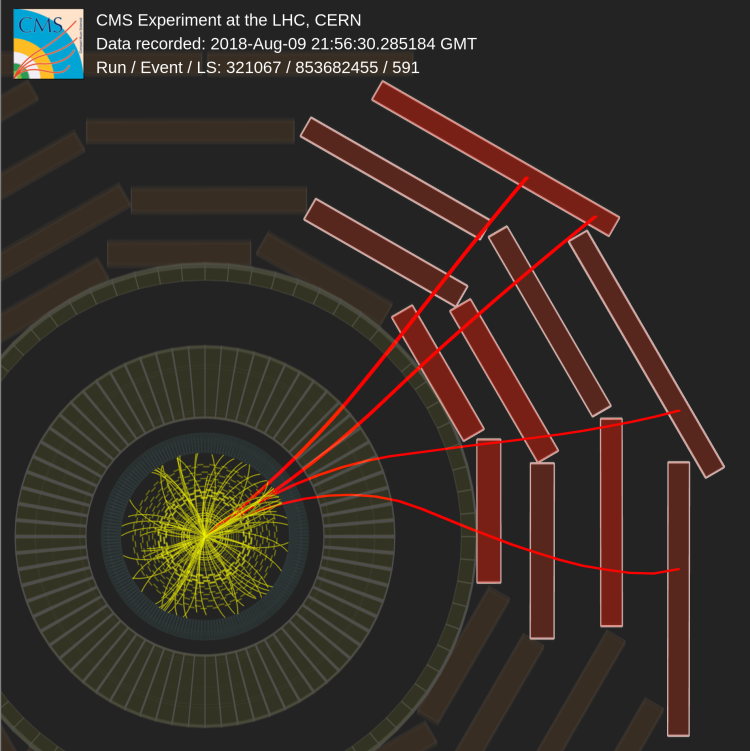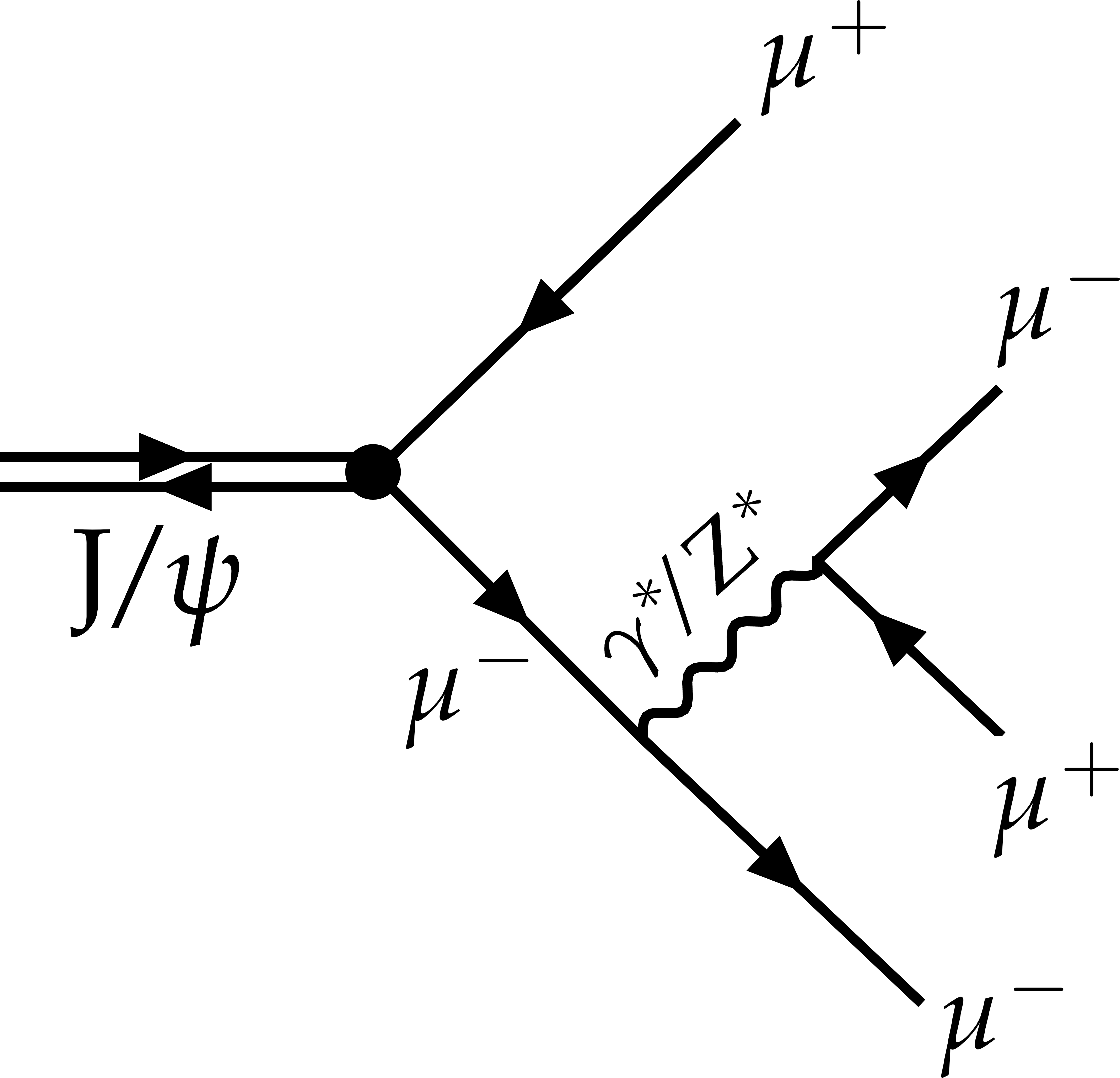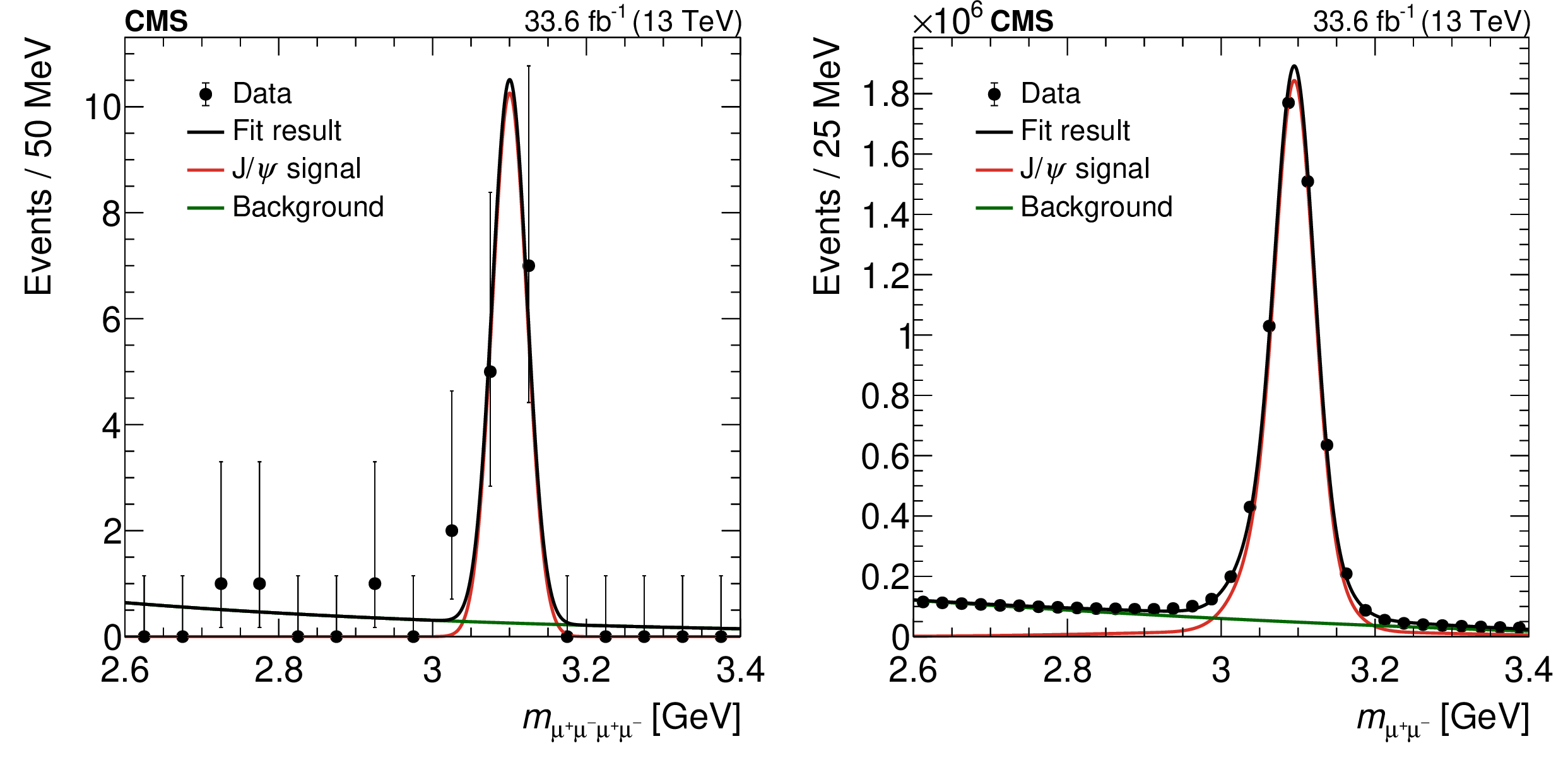
The J/ψ meson, a remarkable particle simultaneously discovered by two independent experiments in 1974, has a unique place in the world of experimental particle physics. By revealing the existence of an extra “flavour” of quarks, it played an important role in establishing quantum chromodynamics (QCD) as the theory that describes the strong force that binds quarks and gluons inside hadrons and, indirectly, protons and neutrons in atomic nuclei. Composed of a charm quark and a charm antiquark, this “charmonium” meson quickly decays into more stable particles, such as muons, which can be detected in our experiments. Remarkably, the J/ψ has just become, also, a new window to probe quantum electrodynamics (QED), another pillar, together with QCD, of the Standard Model of particle physics (SM). And can even be used to check lepton flavour universality, the principle dictating that all charged leptons should interact with other particles in the same way, regardless of their flavor.
Indeed, the CMS experiment has observed, for the first time ever, the decay of the J/ψ meson into four muons (J/ψ → μ+μ−μ+μ−). This finding, reported in a recently-submitted letter, represents another step forward in our exploration of rare particle decays. This was made possible by using a crucial detector system of the CMS experiment, the muon spectrometer. The CMS muon stations span over a surface of 10 000 square meters, making this detector one of the largest of its kind ever built. It was designed to identify and to precisely measure the trajectories of the muons, also thanks to the presence of a strong magnetic field.
Figure 1: Event display showing a J/ψ → μ+μ−μ+μ− candidate event. Remarkably, the four muon tracks seem to reproduce the lines in the CMS logo (seen in the top-left corner). Try to zoom/rotate also in this separate page.
Decays of particles into leptons, particularly muons, offer researchers pristine signals to discover the fundamental mechanisms of the universe. Taking advantage of the extensive data samples collected by the experiment, CMS seized the opportunity to investigate uncommon decays to final states with multiple leptons. In particular, the decay of the Z boson into four leptons has already been observed, paving the way for further searches, such as the Z → J/ψ l+l- and the η → μ+μ-μ+μ- decays.
The J/ψ meson is usually detected in its dimuon decay (J/ψ → μ+μ−), which happens with a probability of about 5%. The CMS experiment has now witnessed its “quadri-muon decay”, leading to a quartet of muons traversing the muon stations, as illustrated in the event display shown in Fig. 1. This very rare occurrence, occurring about once every million J/ψ mesons produced, is akin to finding a needle in the vast haystack of particle collisions.
Figure 2 represents the process behind the production of the four muons: the J/ψ decays to two muons, one of which radiates a virtual photon (or a virtual Z boson) that promptly decays into a second pair of muons. The difference between the decay probability (branching fraction, BF) of the four-muon decay and that of the dilepton decay can be very precisely calculated in QED and is expected to increase proportionally to the ratio between the masses of the lepton and of the J/ψ. This means that the validity of lepton-flavour universality can be tested, with high sensitivity, by comparing the BFs measured for the decays of the J/ψ into different combinations of four leptons (two pairs of electrons or of muons, or one pair of each).

Figure 2: Diagram representing the J/ψ → μ+μ−μ+μ− decay.
The observation of the J/ψ → μ+μ−μ+μ− decay was made possible by analyzing a special sample of proton-proton collisions at a center-of-mass energy of 13 TeV, corresponding to an integrated luminosity of 33.6 fb−1 and collected with special triggers to enhance its population of events with B hadrons. One of the key signatures of the triggers used to select these events is the presence of “displaced muons”, often born from the decay of B hadrons (that travel a certain distance from the proton-proton collision vertex before decaying). This event sample offers a unique window into the behavior of “beauty hadrons”, providing invaluable clues about their properties and interactions. It also allowed us to discover a “resonance” in the distribution of the mass of the four-muon system, at exactly the J/ψ mass (3.1 GeV), as can be clearly observed (with a significance exceeding five standard deviations) in the left panel of Fig. 3. The right panel shows, as a very useful baseline reference, the peak produced by the much more abundant J/ψ → μ+μ− decays.

Figure 3: Mass distributions of the four-muon (left) and dimuon (right) systems found in the events selected for the analysis.
Together with the observations of J/ψ decays to four electrons and to two electrons plus two muons, recently reported by the BES III Collaboration, this new result confirms the potential of such processes to probe the existence of violations of the so-called “lepton flavor universality”, a symmetry conserved in the SM. Such “lepton-flavor violations”, if observed, would be a clear signal of physics beyond the Standard Model (BSM). Precise measurements of the decay probabilities (“branching fractions”) of the decays of a given particle into final states that contain, alternatively, electrons or muons or tau leptons allow us to test lepton-flavor universality. As Stefanos Leontsinis, the leading author of the analysis has said: “the four-lepton decays of the J/ψ are particularly interesting because, as shown in Fig. 2, they involve a virtual mediator that could, potentially, be BSM particles instead of the well-known photons and Z bosons”.
As mentioned above, besides illuminating exotic particle interactions, these rare decays also provide a sensitive testing ground for QED predictions. With each observation of this rare decay, we delve deeper into the intricate symphony of particles and forces that compose the universe, uncovering its underlying melodies and harmonies. The next target is the six muons decay!
Read more about these results:
-
CMS Paper (BPH-22-006): "Observation of the J/ψ→μ+μ−μ+μ− decay in proton-proton collisions at 13 TeV "
-
Display of collision events: CERN CDS
-
@CMSExperiment on social media: LinkedIn - facebook - twitter - instagram
- Do you like these briefings and want to get an email notification when there is a new one? Subscribe here

